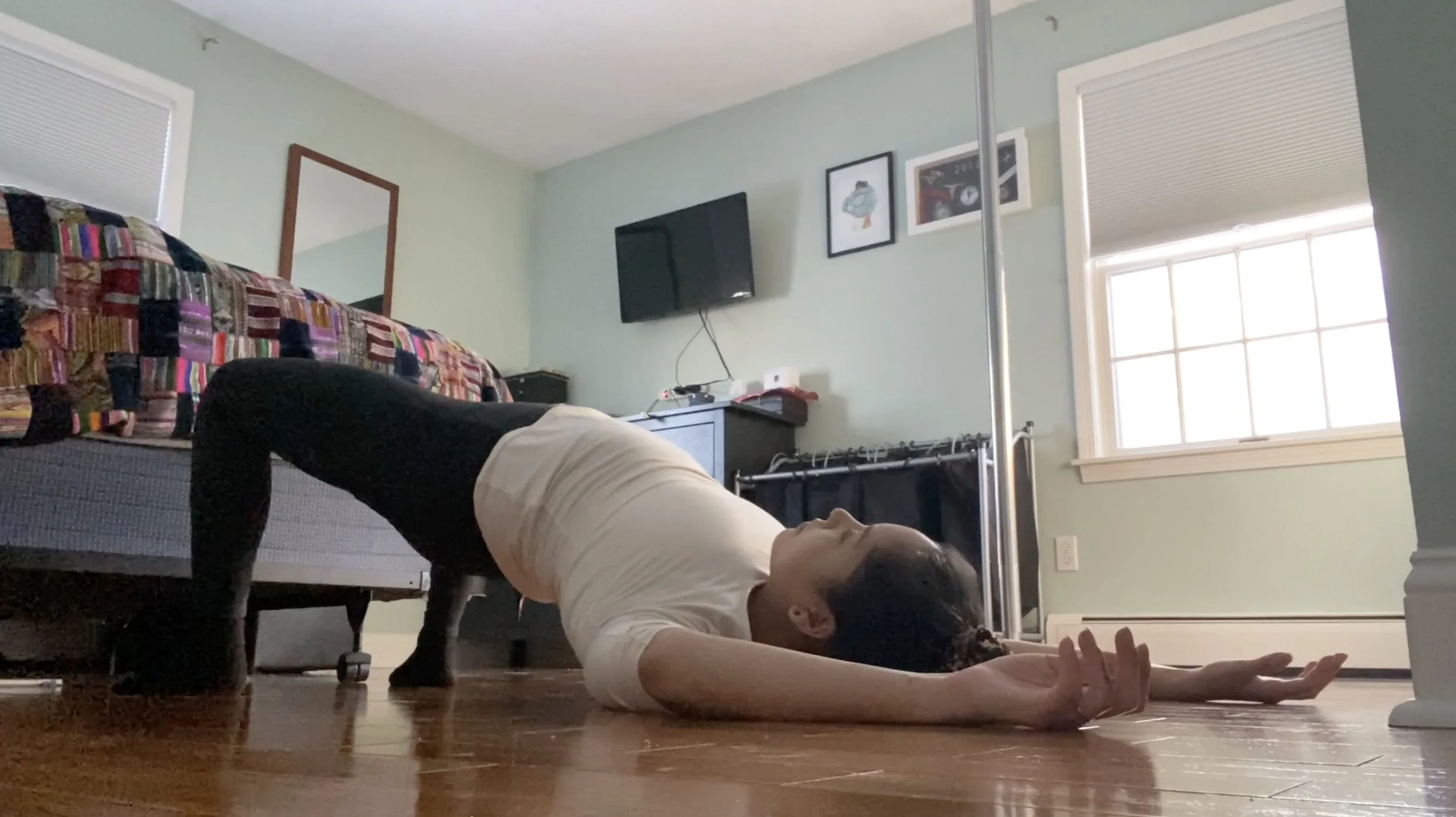1. What are the easy-to-remember ingredients of your loop? (this could be movement, actions, images)
a. Bridge, thread, swing, dive
b. Or… Bridge, X, Sit, Dive
2. Describe your process. How did you choose the parts? How was your experience leading up to this? What did you need to get in the right state of body/mind/spirit to Flow?
a. I revisited HW#3 and Class #6 to review fundamentals about loops because I tend to overthink things, the loop process included. I decided to approach it with a 4 movement/shape pattern. I first wrote notes about shapes I appreciate, movement I appreciate, and movement that is challenging with consideration of injuries I am working through and exercises from my physical therapist. I tried the shapes and movement patterns on their own and in various combinations in order to find what felt most fluid to me, but also what fit best in the space I am working in. Up to this point, before writing notes & loop ideas, I spent days/weeks trying to make sense of loops in my own practice but also trying not to force movement ideas, or call myself in when I am overthinking. I placed a lot of pressure on myself about making an “original” look with “original” movement vocabulary (although I know that is not what the program pushes for- it leaves the process open in training choices), or sometimes feeling like my loop may not be perceived as challenging enough. Taking notes, writing ideas, and allowing time/days between loop practices helped me to process loop building for myself. In the moment of filming, deep breathing and sending breath to places of tension, and finding patience with myself by intentionally “taking whatever time I need for the movement” helped me to get in the right state of body/mind/spirit for Flow. I recognized tension in the first part of the video even, where my farthest hand (r hand) was not touching the floor like my left hand was, which looked and felt like tension on the right side body compared to the left.
i. Shapes I appreciate: bridge, x, seated v
ii. Movement I appreciate: threading, reaching, extending, spinning, swiveling w/momentum
iii. Movement that is challenging: legs swings & balance (while laying on the floor, or standing), movement initiated/led by the toes & feet extending into space, sequential movement through the spine
3. What felt good or provided a healthy challenge in this loop video experience?
a. Repetition at the pace I needed felt good and grounding. I adapted some movement to the limited space (i.e. bending legs in the thread transition to the belly, and sometimes in leg swings). Towards the end of the video, I sped up my movement just slightly which was a nice challenge. Given more space I would have added greater movement challenges with different levels, spatial orientations, extensions, and speed.
4. If there is one thing that you would do differently, what is it?
a. Work in a more open space with fewer obstructions. The obstructions also added a bit of anxiety and likely influenced my slow pace of movement and smaller shapes.
5. What did you learn from this experience that you will apply in your own training or teaching?
a. Making conscious decisions about movement doesn’t have to include overthinking the process. Overthinking may tap into anxieties or make the experience stressful. If I’m stressed or overthinking, movers I facilitate may feel that or internalize it in their process. I want to consider the ways that I facilitate my own movement experience and the words/approaches I use, and how to bring that in the teaching/facilitating space. Stand out moments in this loop experience that could translate to facilitating are: start with simple ideas, be clear about movement intentions and shapes, and encourage myself and movers to take the time needed through the movement.

